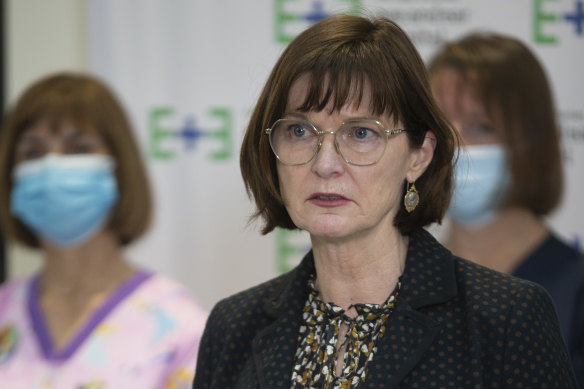A third of Victoria’s urgent code-one ambulance callouts taking more than 15 minutes

Save articles for later
Add articles to your saved list and come back to them any time.
Victoria’s ambulance response times remained stubbornly long over the first three months of this year despite the billions of dollars the state government is pouring into the health system.
The latest data, to be released on Tuesday, will show it took more than 15 minutes for paramedics to treat one in three high-priority, code-one incidents between January and March.
Victorian Health Minister Mary-Anne Thomas. Labor made health a key part of last year’s re-election pitch.Credit: Meredith O’Shea
Ambulance Victoria was called to 92,413 code-one cases in the last quarter. Of those, 65.2 per cent were responded to within 15 minutes.
The state government says this represents a 5 per cent improvement on the previous quarter. But paramedics responded to fewer cases compared with October to December 2022, when there were a record 100,234 code-one cases.
Code-one patients are considered time critical and are second only to code-zero patients, who face life-threatening incidents.
Median emergency department waiting times are back to pre-pandemic levels, according to the government, at 18 minutes. That’s down from 20 minutes in the previous quarter.
Many Victorians waiting for semi-urgent surgery are still stuck on waiting lists for well over a month. But the government has cited an improvement in median waiting times to 19 days as opposed to the same period last year, when the median was 100 days. The improvement is to 21 days for non-urgent patients, who waited for a median 164 days in the March 2022 quarter.
More than 99 per cent of patients needing urgent surgery are treated within the recommended time frame of 30 days, according to the latest figures.
Victorian Health Minister Mary-Anne Thomas acknowledged that while there were some improvements this quarter, more needed to be done to improve ambulance response times and surgery waiting lists.
“We will continue to deliver the staff, services and infrastructure Victorians need to get the care they deserve,” she said.
The comments come as the state government prepares to slash spending in this month’s budget while following through on its election commitments. Victoria’s net debt is tipped to peak at $165 billion by 2025-26.
Labor made health a key part of last year’s re-election pitch. Major promises included hospital upgrades and free university degrees for nurses and midwives.
Premier Daniel Andrews has long cited the launch – and subsequent expansion of – the state’s virtual emergency department, as well as GP-led urgent care clinics, as examples of how his government has tried to ease demand on hospitals and paramedics since the start of the pandemic.
But doctors have criticised the number of clinics available in the regions and say Australia’s hospital crisis won’t be solved until there is a national overhaul addressing both the bulk-billing system and the availability of GPs.
The state budget will be handed down on May 23.
The Morning Edition newsletter is our guide to the day’s most important and interesting stories, analysis and insights. Sign up here.
Most Viewed in Politics
From our partners
Source: Read Full Article
